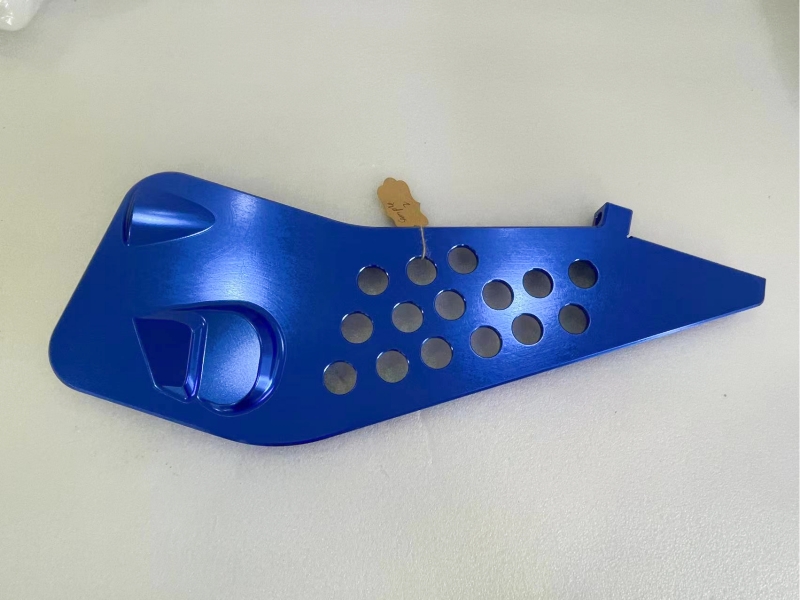目录
ToggleAluminum sheet metal fabrication is an indispensable component of modern industry, playing a critical role across a variety of sectors. Its evolution, driven by technological advancements and industrial demands, has cemented its position as a key enabler in innovation and production. This article explores the core technologies, applications, and future trends of aluminum sheet metal fabrication, providing a comprehensive overview for businesses and professionals.
Core Technologies in Aluminum Sheet Metal Fabrication
1. Laser Cutting Technology
- Principle: Laser beams with high power density melt and vaporize aluminum sheets to achieve precise cuts.
- Cutting Precision: Delivers highly accurate cuts with smooth surfaces and minimal dimensional tolerance.
- Cutting Speed: Varies depending on sheet thickness—thinner sheets allow faster cutting.
- Equipment Requirements: Requires advanced high-power, high-stability laser systems equipped with CNC controllers and optical pathways.
2. Bending Technology
- Principle: Pressure applied via bending machines causes plastic deformation, creating desired angles and shapes.
- Precision: Influenced by aluminum sheet thickness, material properties, and machine accuracy. Precise control of spring-back and bending angles ensures design compliance.
- Tool Selection: Proper upper and lower die selection is critical for bending quality and efficiency.
- Sequence Planning: Strategic folding order minimizes adverse effects and ensures the final shape meets design requirements.
3. Stamping Technology
- Principle: Using presses and molds, aluminum sheets undergo cutting, drawing, and forming operations.
- Precision: Dependent on mold design and press stability.
- Mold Design: Customized molds cater to specific product requirements, optimizing efficiency and quality.
- Stamping Speed: Balanced with aluminum sheet properties and product complexity to ensure reliability.
4. Welding Technology
- Principle: Methods like TIG welding or laser welding join aluminum sheets together.
- Weld Strength: Ensures joints meet performance standards without compromising the product’s structural integrity.
- Distortion Control: Techniques such as optimal weld sequences and fixture setups reduce deformation.
- Quality Assurance: Non-destructive testing evaluates weld reliability and safety.
Applications in Various Industries
1. Automotive Industry
- Body Manufacturing: Aluminum sheets are used for car exteriors, doors, and hoods, reducing weight and improving fuel efficiency.
- Interior Components: Produces lightweight yet flexible interior panels and dashboard covers.
- Chassis Parts: Aluminum’s corrosion resistance enhances protection for underbody shields.
2. Aerospace Industry
- Aircraft Skin: As a lightweight yet durable material, aluminum sheets boost flight performance and fuel efficiency.
- Wing and Tail Components: Essential for the production of wings, tailpieces, and structural elements.
- Interior Structures: Applied in partitions, flooring, and frames to reduce overall aircraft weight.
3. Electronics Industry
- Device Enclosures: Fabricates aesthetically pleasing and thermally efficient housings for laptops, smartphones, and other electronics.
- Internal Components: High-precision aluminum panels and brackets meet compatibility and performance needs.
- Heat Dissipation: Aluminum’s excellent thermal conductivity is utilized for heat sinks and cooling systems.

Future Trends in Aluminum Sheet Metal Fabrication
1. Integration of New Technologies
The combination of laser cutting and robotics enables automated and high-precision manufacturing, increasing efficiency while ensuring quality.
2. Enhanced Precision
Growing industry demands for tighter tolerances are driving fabrication technologies toward achieving micron-level accuracy in processing.
3. Sustainability
Efforts to minimize emissions and reduce waste during fabrication support global environmental goals and ensure compliance with green manufacturing standards.
4. Material Innovation
Advances in aluminum alloys aim to enhance strength, corrosion resistance, and suitability for a broader range of applications.
Conclusion
Aluminum sheet metal fabrication is a cornerstone of modern manufacturing, underpinned by cutting-edge techniques such as laser cutting, bending, stamping, and welding. Its diverse applications across automotive, aerospace, and electronics industries underscore its versatility and indispensability.
As the demand for higher precision, sustainability, and efficiency grows, ongoing innovation in aluminum sheet metal fabrication will remain crucial for industrial advancement. By investing in new technologies and material developments, businesses can unlock greater potential and propel the industry forward.
0